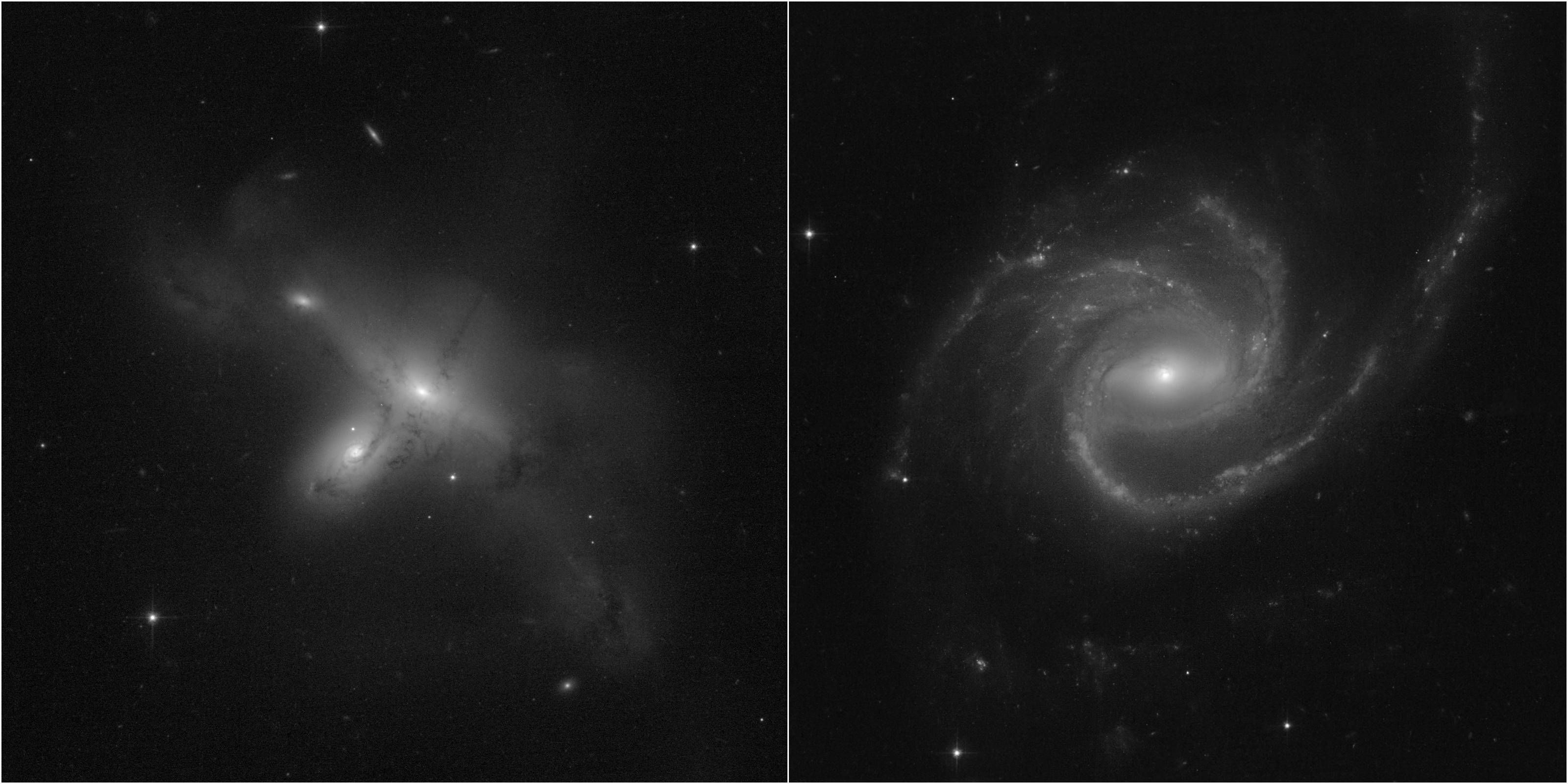
[Left] ARP-MADORE2115-273, a rarely observed example of a pair of interacting galaxies in the southern hemisphere. [Right] ARP-MADORE0002-503, a large spiral galaxy with unusual, extended spiral arms. While most disk galaxies have an even number of spiral arms, this one has three. Credits: Science: NASA, ESA, STScI, Julianne Dalcanton (UW) Image processing: Alyssa Pagan (STScI)
The Galaxies
ARP-MADORE2115-273 is a rare example of an interacting pair of galaxies and represent Hubble’s first high-resolution images of the system, 297 million light-years distant. This strongly interacting pair was previously thought to be a “collisional ring” system from a head-on merger. These new observations illustrate their ongoing interaction is far more complex, leaving behind a rich network of stars, dust and gas.
ARP-MADORE0002-503, at a distance of 490 million light-years, is a large, Sc (classic spiral with broad, open, sweeping spiral arms) spiral galaxy with three arms, unusual as most spiral galaxies have an even number. The expansive arms extend out to a radius of 163,000 light-years, times greater than our Milky Way Galaxy.
The instrument(s) used to capture the images: ACS/WFC (Advanced Camera for Surveys and Wide Field Camera).
Both galaxies are from the Halton C. Arp and Barry F. Madore catalog of Southern Peculiar Galaxies and Associations.
In the lead-up to full operational status, we get a glimpse of the palpable atmosphere in the Hubble Control Room at NASA/Goddard:
The switch required 15 hours of spacecraft commanding from the ground. The main computer had to be turned off, and a backup safe mode computer temporarily took over the spacecraft. Several boxes also had to be powered on that were never turned on before in space, and other hardware needed their interfaces switched
said Jim Jeletic, Hubble deputy project manager at Goddard. He continued:
There was no reason to believe that all of this wouldn’t work, but it’s the team’s job to be nervous and think of everything that could go wrong and how we might compensate for it. The team meticulously planned and tested every small step on the ground to make sure they got it right.
Astronomy For Change: https://astronomyforchange.org
Buy us a Coffee? https://www.buymeacoffee.com/astronomychange
Follow Us On Twitter: https://twitter.com/astronomychange
Why not support us on Patreon: https://www.patreon.com/astronomyforchange
Imagination is more important than knowledge
![]()
An index of all articles can be found here.
If you enjoyed this article, please consider supporting us with a modest donation
or through a subscription on our Patreon Page
Membership at Astronomy for Change is Free!




ARP-MADORE0002-503 must be the result of a late stage merger of galaxies